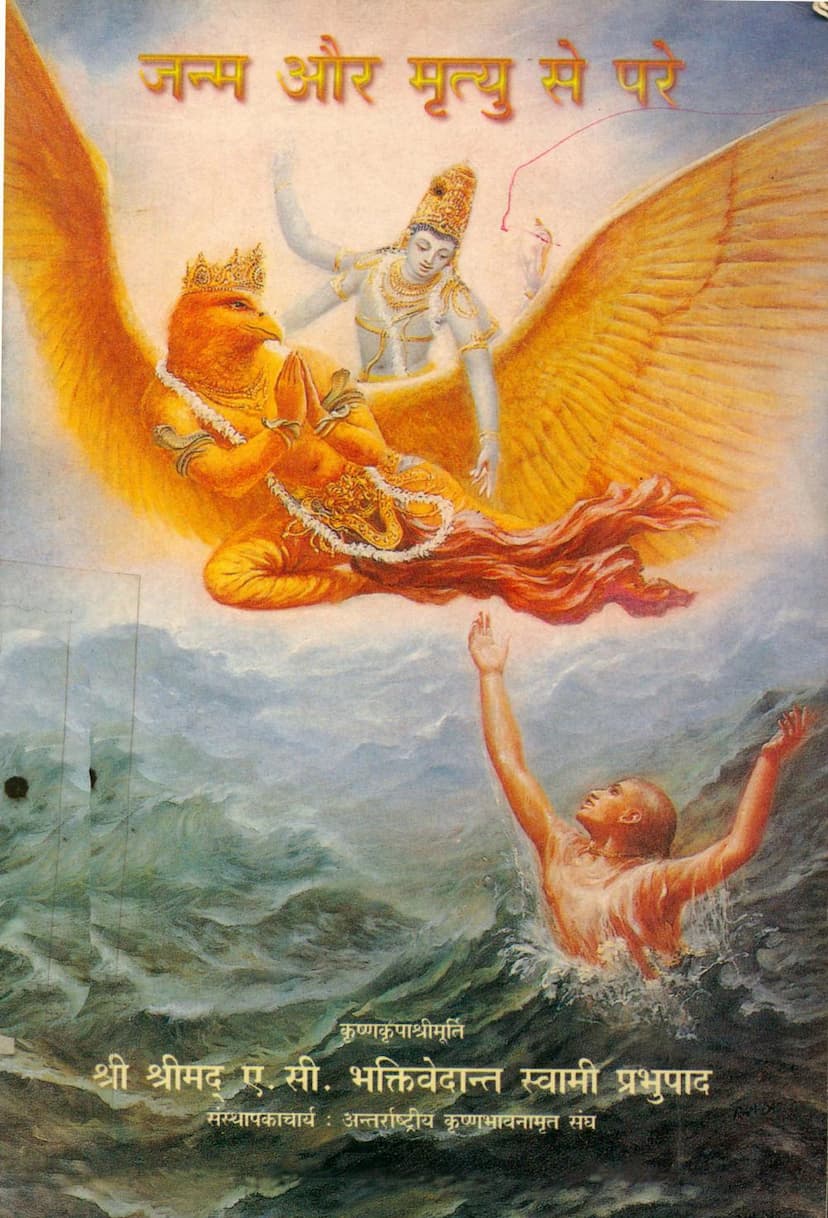Janma Aur Mrutyu Se Pare
Added to library: September 2, 2025

Summary
The book "Janma Aur Mrutyu Se Pare" (Beyond Birth and Death) by A.C. Bhaktivedanta Swami Prabhupada, founder-acharya of the International Society for Krishna Consciousness (ISKCON), is a spiritual discourse that aims to guide readers beyond the cycle of birth and death. The text, rooted in Vedic scriptures, particularly the Bhagavad Gita, presents a profound understanding of the self, the material world, and the ultimate destination of the soul.
Here's a comprehensive summary of the key themes covered in the book:
1. The Self is Not the Body:
- The fundamental premise is that the true self is the soul (atma), which is eternal, immutable, and distinct from the physical body. The body is a temporary vessel, subject to birth, death, aging, and disease.
- Identifying with the body is the root cause of suffering. This misidentification creates an illusion of happiness and fulfillment tied to transient material pleasures.
- The Bhagavad Gita (2.14 and 2.18) is cited to emphasize the impermanent nature of the body and the eternal nature of the soul, urging one to tolerate the dualities of material existence.
2. The Nature of Consciousness and the Soul:
- Consciousness is presented as the symptom of the soul's presence. Without consciousness, the body is inert, like a machine.
- The soul is described as atomic in size, yet powerful enough to animate the entire body.
- The soul's intrinsic nature is sac-cit-ananda (eternal, full of knowledge, and full of bliss). However, due to its entanglement with the material body, these innate qualities are suppressed, leading to frustration and dissatisfaction.
3. Transcending Material Desires and Sensory Pleasures:
- The senses are constantly seeking gratification from material objects, pulling the individual in various directions and causing distress.
- The Bhagavad Gita (2.67) is quoted to illustrate how the mind, when attached to a single sense, can lead to the loss of one's intelligence.
- True happiness is not found in fleeting sensory pleasures, which are ultimately illusory and temporary. The desire for these temporary pleasures stems from a misidentification with the material body.
4. The Path to Liberation (Moksha):
- The book advocates for controlling the senses and turning the mind inward towards the self. This is achieved through spiritual practices like yoga.
- Yoga is defined as the process of connecting with the Supreme Being. Different paths of yoga (Hatha, Jnana, Dhyana, Bhakti) are mentioned, with Bhakti Yoga (devotional service) being highlighted as the most effective.
- The ultimate goal is to realize one's true spiritual identity and re-establish the lost connection with God.
5. The Soul's Journey After Death:
- Death is not an end but a transition. The consciousness (soul) carries the impressions of the entire life to the next body.
- The state of mind at the time of death determines the future destination of the soul, as stated in the Bhagavad Gita (8.6).
- The book describes the process for a yogi at the time of death to transfer their consciousness to the spiritual realm, involving regulating breath and focusing the mind.
6. The Material World vs. The Spiritual World (Paravyoma/Vaikuntha):
- The material universe is characterized by the three modes of material nature (sattva, rajas, tamas) and is a place of repeated birth, death, old age, and disease.
- Even the highest planets within the material universe, like Brahmaloka, are temporary and subject to the cycle of creation and annihilation.
- Beyond the material universe lies the spiritual world, or Paravyoma, which is eternal and free from all material suffering. This is the ultimate destination for the soul.
7. The Nature of God and Spiritual Realization:
- Krishna is presented as the Supreme Personality of Godhead, the source of all existence, possessing eternal, blissful, and all-knowing spiritual form (sac-cit-ananda vigraha).
- The ultimate spiritual realization is to return to Krishna's abode (Krishna Loka or Vaikuntha) and engage in loving service to Him.
- The book emphasizes the importance of Bhakti Yoga, especially the chanting of the Hare Krishna mantra, as the easiest and most effective means to achieve this in the present age.
8. The Impermanence of Material Achievements:
- Scientific progress, accumulation of knowledge, wealth, and power in the material world are ultimately temporary. Whatever is gained in this life is lost at the time of death.
- The pursuit of material comforts and pleasures is a distraction from the true spiritual purpose of life.
9. The Importance of the Guru and Hearing Scriptures:
- Spiritual knowledge must be received from authorized sources, such as the Bhagavad Gita and its commentaries by realized souls.
- Humility and a willingness to hear from a spiritual master are essential for spiritual advancement.
10. The Eternal Nature of the Soul's Desire for Bliss:
- The soul's innate desire for happiness is a reflection of its eternal nature. However, this happiness is found in connection with Krishna, not in material pursuits.
- The book clarifies that material pleasures are a distorted reflection of the spiritual bliss found in Krishna's company.
11. The Means of Attaining Krishna's Abode:
- Devotional service (bhakti) is the primary means to attain Krishna's transcendental abode. This involves engaging all senses in the service of the Lord.
- The book encourages constant remembrance of Krishna through chanting His holy names, hearing His glories, and serving Him. This practice purifies the consciousness and prepares the soul for the spiritual journey.
- The ultimate benefit of reaching Krishna's abode is eternal bliss, freedom from the cycle of birth and death, and a spiritual body identical to that of God.
In essence, "Janma Aur Mrutyu Se Pare" offers a message of hope and liberation by guiding individuals to understand their true spiritual nature, detach from the material world, and engage in loving devotional service to Krishna, thereby transcending the limitations of birth and death and achieving eternal spiritual perfection.